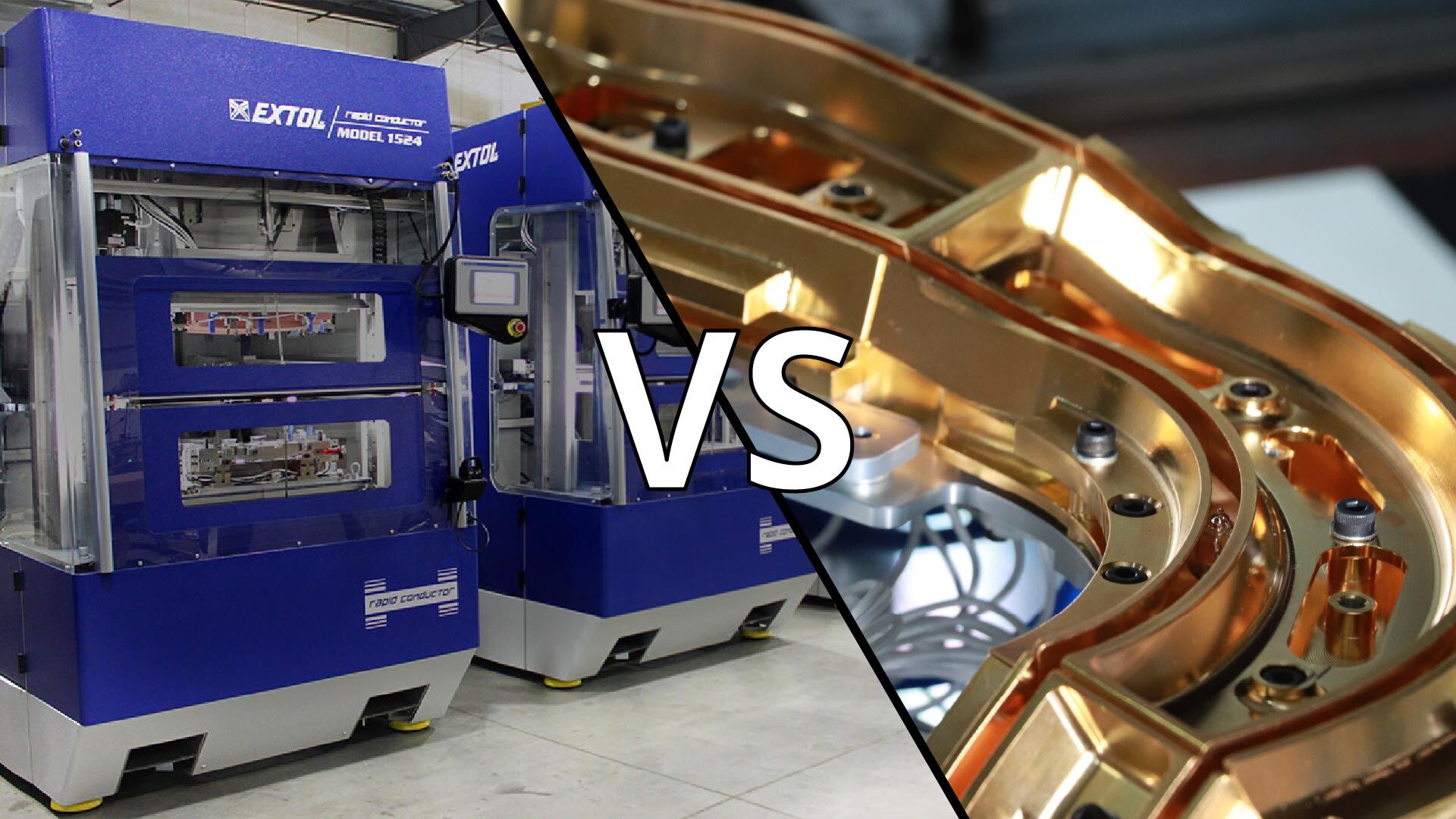Hot-Plate vs IR Welding: The Epic Showdown
Published by
Jason Dornbos
on
This webinar compares hot plate welding and IR welding, emphasizing that both technologies require heat and pressure, but differ in how heat is applied [06:12].
Hot Plate Welding
- Process: Involves touching plastic parts to a heated tool, allowing heat to conduct into the weld rib [06:38]. This method ensures weld surfaces are parallel, even if parts are warped, leading to strong, consistent joints [11:36].
- Parameters: Heat is controlled by tool temperature, melt depth, and time. Pressure (seal and weld phase) is controlled by depth, force applied, and hold time [10:03].
- Materials: Great for polypropylene, ABS, polycarbonate, and materials with fillers like glass or talc. Not recommended for sticky materials, such as nylon and PBT [13:29].
- Advantages: Creates strong, robust, and hermetic seals with no particulate generation, making it suitable for clean room environments [24:36]. Can achieve 80-100% parent material strength [23:13]. Effective for stack welding multiple layers [31:28].
- Applications: Engine degas bottles, automotive interior trim (glove boxes, center consoles, armrests, etc), batteries, and medical blood cartridges [21:12].
- Equipment: Extol offers the Rapid Conductor (three sizes for various working areas), Compact Fusion (smaller, benchtop unit), and custom large hot plate welders for big parts like pallets [33:01]. A new, more cost-effective welding platform with multiple technology options is also being launched [34:52].
IR Welding
- Process: A non-contact process where an IR emitter radiates energy absorbed by the plastic part [06:52]. Heat and pressure phases are similar to hot plate welding, but heat is applied via radiation [07:15].
- Types:
- InfraGuide: Unique to Extol, uses individual bulbs for focused, efficient, and tunable energy. Air cooling minimizes flare-ups by pushing gases away from the emitter [43:09]. Can weld clear polysulfone.
- Quartz IR: Uses quartz emitters, which can be challenging to achieve uniform energy and may have a medium flare-up risk [45:00].
- Materials: Suitable for materials that may be sticky for hot plate welding, such as nylons and PBTs [48:25].
- Advantages: Non-contact process prevents sticking. InfraGuide allows fine-tuning power across the weld surface [43:09]. Can be used for applications requiring airtight and particulate-free welds [48:25].
- Considerations: Part size affects cost; InfraGuide can become costly for very large parts [46:43]. Weld rib design needs to be different from hot plate welding, often requiring less height [19:03].
Key Comparisons
- Material Compatibility: Main consideration when choosing between the two [07:49].
- Particulate: Both hot plate welding and IR welding produce flash but no particulate [24:36].
- Warped Parts: Hot plate welding excels at normalizing warped surfaces due to material displacement [11:51]. IR welding does not displace material, so initial part flatness is more crucial [19:20].
- Energy Consumption: Hot plate welders, once on, remain stable but continue to consume energy. Designs are evolving to minimize thermal mass and reduce power [29:35]. For very large parts, the energy consumption of IR welding can sometimes exceed that of a hot plate [31:15].
- Flexibility: Hot plate welding offers geometrical freedoms for contoured parts that vibration welding might not [22:27].

